EIsner Hall of Fame
A-F
Since the founding of the Will Eisner Comic Industry Awards (and their previous incarnation, the Kirby Awards), the following individuals have been inducted into the Hall of Fame.

Neal Adams
1941-2022
Neal Adams’ work on such titles as Batman, Deadman, and Green Lantern/Green Arrow brought not only a more realistic look to comics but took many liberties with page layout and cover design. In addition, his studio, Continuity Associates, served as a spawning ground for new talents in the field. Adams is also an outspoken advocate for creator rights in the comics industry.
Inducted 1998

Charles Addams
1912–1988
Cartoonist Charles “Chas” Addams is best known for his macabre humor, exemplified in the Addams Family cartoons, which gave rise to the TV series and films. Addams became a freelance cartoonist in the early 1930s. He sold his first drawing to the New Yorker in 1932. His cartoons ran regularly in the magazine from 1938 up until his death. Addams drew more than 1,300 cartoons over the course of his life. Those that did not appear in The New Yorker were often in Collier’s and TV Guide. In 1961, Addams received, from the Mystery Writers of America, a Special Edgar Award for his body of work. His cartoons appeared in book collections, calendars, and other merchandising.
Inducted 2018
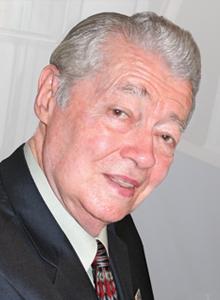
Murphy Anderson
1926–2015
Murphy Anderson’s name is synonymous with the Silver Age of comics at DC. Teaming with Carmine Infantino in the late 1950s and early 1960s, he brought a distinctive look to the company’s science fiction titles, especially Adam Strange in Mystery in Space. He is also known for drawing Hawkman, Atom, Green Lantern, and Atomic Knights.
Inducted 1999

Ross Andru
1927–1993
Artist Ross Andru is best known for his collaborations with inker Mike Esposito and for co-creating the Metal Men (with Robert Kanigher) and the Punisher (with Gerry Conway). Andru and Esposito began collaborating at DC Comics in the early 1950s, on war comics (Our Army at War, Our Fighting Forces, Star Spangled War Stories), The Flash, Metal Men, and a memorable run on the Silver Age era of Wonder Woman (1958–1967).
Inducted 2007
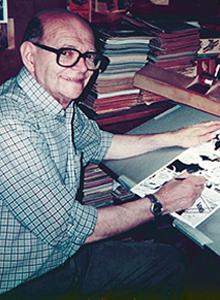
Jim Aparo
1932–2005
Jim Aparo’s first comic book work was at Charlton in the late 1960s. He worked on several genres there and was eventually recruited by editor Dick Giordano for a move to DC Comics in the late 1960s, where he handled such features as Aquaman and Phantom Stranger before landing the art chores on DC’s premiere team-up book The Brave and the Bold (starring Batman). He then co-created (with Mike W. Barr) Batman and the Outsiders, which he drew from 1983 to 1985. Aparo went on to draw stories for Batman (most notably “A Death in the Family” storyline), Detective, and other DC titles into the late 1990s. For most of his career, Aparo not only pencilled his work but inked and lettered it as well.e. He is also known for drawing Hawkman, Atom, Green Lantern, and Atomic Knights.
Inducted 2019
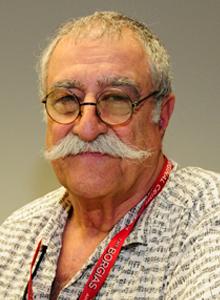
Sergio Aragonés
1937–
Sergio Aragonés has been called everything from “the Fastest Cartoonist in the World” to “the Most Beloved Man in Comics.” Besides having drawn cartoons for MAD magazine for nearly 50 years, Sergio is the creator of the long-running series Groo the Wanderer and has produced such other works as Mighty Magnor, Fanboy, and Actions Speak.
Inducted 2002
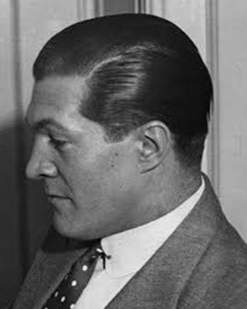
Peter Arno
1904–1968
Cartoonist Curtis Arnoux Peters Jr. helped create The New Yorker’s signature style. With the publication of his first spot illustration in 1925, Arno began a 43-year association with the weekly magazine. His many iconic covers and cartoons helped build The New Yorker’s reputation of sophisticated humor and high-quality artwork.
Inducted 2025

Gus Arriola
1917–2008
Gus Arriola wrote and drew the Mexican-themed comic strip Gordo. The strip, which prominently featured Mexican characters and themes, set a high standard with its impeccable art and design and had a long and successful life in newspapers (1941–1985).
Inducted 2025
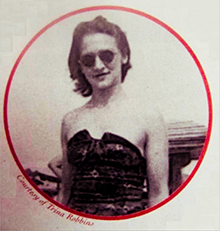
Ruth Atkinson
1918–1997
Ruth Atkinson was one of the many female comics artists who worked for publisher Fiction House. She pencilled and inked such features as Clipper Kirk, Skull Squad, and Suicide Smith. She became the company’s art director, a job which she quit because it did not leave her time to draw. She became a freelancer, creating the first issues of Millie the Model and Patsy Walker (co-created with Stuart Little) for Stan Lee at Timely/Marvel. Atkinson later drew for some of the first romance comics, including Lev Gleason Publications’ Boy Meets Girl and Lover’s Lane, through the early 1950s.
Inducted 2021

Dick Ayers
1924–2014
Dick Ayers has had a career spanning seven decades and over 50,000 pages. He started out in comics in 1947 and worked at Magazine Enterprises, Charlton Comics, and Timely/Atlas, where he was known for his art on such western titles as Rawhide Kid, Two-Gun Kid, and Ghost Rider (which he co-created). He became part of the famous Marvel Comics Bullpen in the 1960s and 1970s, working on such titles as The Incredible Hulk, Captain America, and Sgt. Fury and His Howling Commandos.
Inducted 2007

Jerry Bails
1933–2006
Known as the “Father of Comic Book Fandom,” Jerry Bails was one of the first to approach comic books as a subject worthy of academic study, and he was a primary force in establishing 1960s comics fandom. He was the founding editor of the fanzines Alter-Ego, The Comicollector, and On the Drawing Board, the forerunner to the long-running newszine The Comic Reader, designed to showcase the latest comic news. He then headed the drive to establish the Academy of Comic-Book Fans and Collectors. Another important contribution was his Who’s Who of American Comic Books, published in four volumes during 1973–1976.
Inducted 2023

Kyle Baker
1965–
Kyle Baker has authored more than 15 graphic novels and illustrated hundreds more in a career that extends over three decades. He is the winner of eight Eisner Awards and four Harvey Awards, among others. A pioneer in the graphic novel format since the 1980s, Baker helped define and evolve the medium with works such as Nat Turner, Why I Hate Saturn, and King David. Other titles include The Cowboy Wally Show; Truth: Red, White & Black; and Birth of a Nation.
Inducted 2025
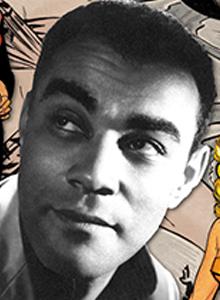
Matt Baker
1921–1959
Best known for his romance and “good girl” comics, Matt Baker started his career in 1944 working for Fox, Fiction House, and Atlas. He is mostly remembered for his work on the Phantom Lady series and the daily Flamingo comic strip. Baker was the artist on the arguably first “graphic novel,” Arnold Drake’s It Rhymes with Lust. He was one of the industry’s first major African American comic book artists.
Inducted 2009
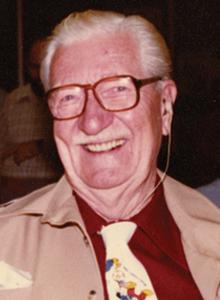
Carl Barks
1901–2000
Known affectionately as “the Duck Man,” Carl Barks wrote and drew hundreds of memorable stories about Donald Duck and his various relatives (most notably Uncle Scrooge, whom Barks created) in comic books from the 1940s to the early 1960s. In retirement, Barks created a number of oil paintings and lithographs featuring the Disney duck characters that achieved high value among collectors.
Inducted 1987

lyNDA BarRY
1956–
Lynda Barry is the creator behind the seminal comic strip Ernie Pook’s Comeek, which was syndicated across North America in alternative weeklies from 1979 to 2008. She is the author of The Freddie Stories, One! Hundred! Demons! (which won the 2003 Eisner Award for Best Graphic Album), The! Greatest! of! Marlys!, Cruddy: An Illustrated Novel, and The Good Times Are Killing Me, which was adapted as an off-Broadway play and won the Washington State Governor’s Award. She has written two bestselling and acclaimed creative how-to graphic novels: Picture This and What It Is, which won the 2009 Eisner Award for Best Reality-Based Work and the R. R. Donnelly Award for highest literary achievement by a Wisconsin author.
Inducted 2016

Alison Bechdel
1960–
Alison Bechdel began her comic strip Dykes to Watch Out For in 1983 and it soon became a mainstay in gay and alternative news weeklies; it ran for 25 years, with Bechdel self-syndicating the strip and eventually publishing it on the Internet. In the 1985 strip “The Rule,” a character states that she will watch a movie only if it has at least two women who talk to each other about a topic other than men. In the 21st century those guidelines became known as the Bechdel Test, a shorthand method to illustrate the dramatic gender disparity in Hollywood. In 2006 Bechdel published the graphic memoir Fun Home, a coming-of-age story that detailed her relationship with her father, a closeted gay man with an obsessive eye for decorative detail, and her own emerging lesbian consciousness. The critically acclaimed work was named a finalist for the National Book Critics Circle Award, and it won the Eisner for best reality-based work. In October 2013 Fun Home was brought to the stage and won a string of awards during its Off-Broadway run. The musical made its Broadway debut in April 2015 and went on to win five Tony Awards.
Inducted 2020
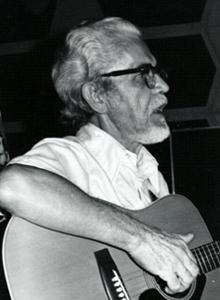
C. C. Beck
1910–1989
Charles Clarence Beck gave the distinctive cartoony look to Captain Marvel when he drew the character for Fawcett. In his later years, he became a beloved curmudgeon in the comics field, and he worked on DC’s first revival of the character (as Shazam!) in the early 1970s.
Inducted 1993

Karen Berger
1958–
Karen Berger entered the comics profession in 1979 as an assistant to editor Paul Levitz at DC. She later became Levitz’s editor when he was writing Legion of Super-Heroes. She soon became editor of House of Mystery and Amethyst, Princess of Gemworld. Berger was instrumental in nurturing Alan Moore’s Swamp Thing and later helped bring Neil Gaiman’s work to a mass audience with The Sandman. The success of these titles led to the creation of the mature-reader Vertigo line in 1993. Titles she shepherded under that imprint include Fables, Hellblazer, 100 Bullets, Preacher, V for Vendetta, and Y: The Last Man. She received the Eisner Award for Best Editor in 1992, 1994, and 1995. In 2013 she stepped down from her post as executive editor & senior vice president of DC Entertainment’s Vertigo imprint. In 2017 Dark Horse Comics announced that she would be heading the imprint Berger Books, which launched in 2018.
Inducted 2018
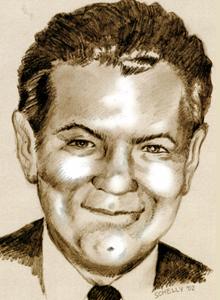
Otto Binder
1911–1974
In comics, Otto Binder is best known as the chief writer for various Captain Marvel titles, helping create the mythology of The Big Red Cheese. Between 1943 and 1951 he wrote nearly 800 stories for Captain Marvel, Marvel Family, Captain Marvel Jr., and related titles. In addition, he wrote some 2,000 other stories in nearly 200 different titles during comics’ Golden Age.
Inducted 2004

Charles Biro
1911–1972
Charles Biro is credited with creating the crime comics genre back in 1942 with the seminal title Crime Does Not Pay, for which he drew 57 covers as well as writing dozens of stories. A consummate storyteller, Biro also wrote and created “Crimebuster” for Boy Comics and “The Little Wise Guys” for Lev Gleason’s Daredevil series.
Inducted 2002

Steve Bissette
1955–
Steve Bissette was one of the first graduates of the Joe Kubert School of Cartoon and Graphic Art. Together with writer Alan Moore and inker John Totleben, he was responsible for revitalizing the DC series Swamp Thing into a critically acclaimed horror classic. His later work includes editing and publishing the influential anthology horror comic series Taboo and drawing and self-publishing Tyrant, the epic biography of a Tyrannosaurus rex.
Inducted 2025

Bill Blackbeard
1926–2011
Writer/editor/archivist Bill Blackbeard co-edited The Smithsonian Collection of Newspaper Comics, published in 1977. In the 1960s Blackbeard formed the San Francisco Academy of Comic Art. His collection (now housed at Ohio State University’s Cartoon Research Library) consists of clipped comic strips, whole comics pages, and complete Sunday sections. These archives have been used for award-winning collections of Popeye, Krazy Kat, The Katzenjammer Kids, Yellow Kid, and other classic newspaper strip reprints.
Inducted 2011

Vaughn Bodé
1947–1975
In a career that barely spanned two decades, Vaughn Bodé produced a phenomenal body of work. Among his publications are the self-published Das Kampf, which was one of the first underground comics in 1963. He was the editor of Gothic Blimp Works, the first weekly underground comic published in the 1960s. His “Cheech Wizard” appeared in National Lampoon from 1971 to 1975.
Inducted 2006
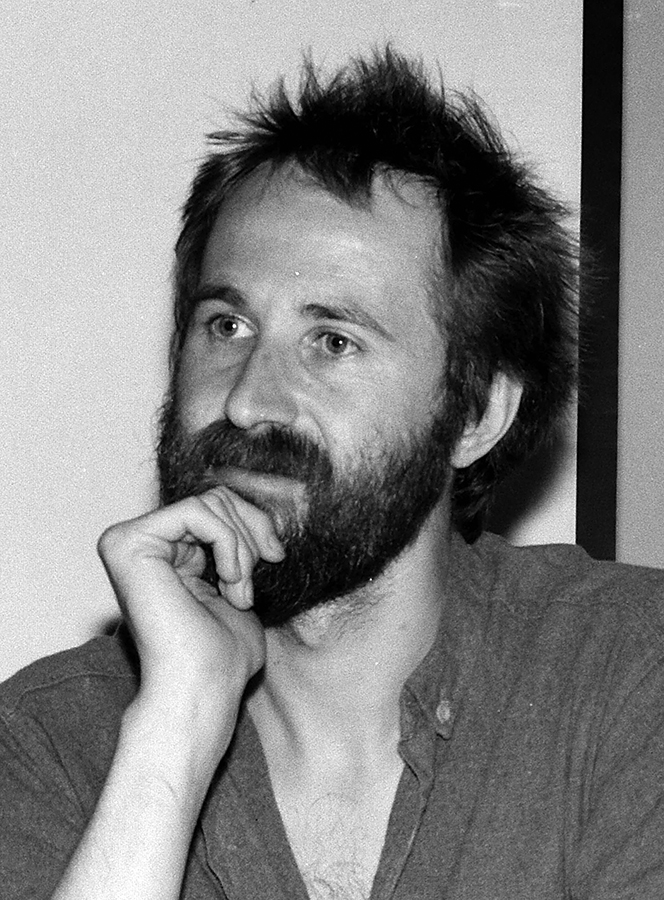
Brian Bolland
1951–
Brian Bolland is a British comic book artist originally known for his work on Judge Dredd. He was one of the first British artists to be recruited by DC Comics in the early days of what became known as “the British Invasion,” which revolutionized the industry in the 1980s. One of his earliest works for DC was Justice League of America #200 in 1982, though he is better remembered for the 12-issue limited series Camelot 3000, DC’s first ever “maxi-series.” He also drew the Batman graphic novel The Killing Joke, written by Alan Moore, and a Judge Dredd/Batman team-up, also by Moore. In recent years, he has concentrated mainly on providing cover art, most of it for DC.
Inducted 2023
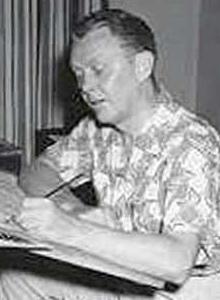
Wayne Boring
1905–1987
Wayne Boring was one of the best-known and most influential Superman artists. He started out as an art assistant in the Siegel & Shuster studio in 1937. After Superman became a hit, Boring became the artist for the syndicated newspaper strip and was hired by DC in 1942 to draw Superman comics, which he did for nearly 20 years, aided by inker Stan Kaye. Many credit Boring with establishing the iconic look of Superman during the character’s most popular period.
Inducted 2007
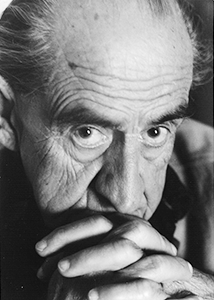
Alberto Breccia
1919–1993
Breccia was an Argentinean artist who worked from the 1940s through the 1980s. Starting out in commercial illustration for magazines, juvenile tales, and genre stories, His first major character, a detective named Sherlock Time, appeared in the late 1950s and was written by Héctor German Oesterheld, who would become a long-time collaborator. Their “masterpiece” is considered Mort Cinder, produced from 1962 to 1964. Breccia worked with and was influenced by Hugo Pratt and was made a member of the “Venice Group” that Pratt and other European artists created. One of Breccia’s last works was a series called Perramus, a critique of life under dictatorship, that was begun when Argentina was still under the control of the dictatorship that was very likely responsible for the disappearance of Oesterheld. This act of artistic courage led to an award from Amnesty International in 1989.
Inducted 2021

Nell Brinkley
1886–1944
Nell Brinkley was an American illustrator and comics artist who was sometimes referred to as the “Queen of Comics” during her nearly four-decade career working with New York newspapers and magazines. Her comics are a luxuriously rendered visual chronicle of woman’s progress over the decades, from her Victorian-era heroines to her Deco-styled independent working women. Her iconic Brinkley Girl, celebrated in song and on stage, surpassed the Gibson Girl in popularity. Her creative legacy can be seen in the work of artists from Dale Messick, Ramona Fradon, and Marie Severin to Trina Robbins, as well as in shoujo manga.
Inducted 2020
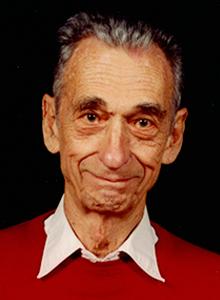
John Broome
1886–1944
John Broome is best known as a writer for DC, where he worked from 1946 to 1970 on such titles as the Silver Age Green Lantern and Flash series as well as several Justice Society of America stories. He created many DC characters and institutions, including the 1940s Atomic Knights, the Silver Age Flash Rogues Gallery of supervillains, the (Green Lantern) Guardians of the Universe, and the Elongated Man.
Inducted 2008
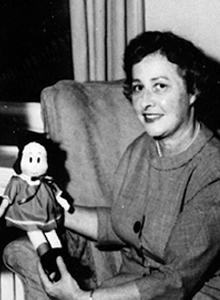
Marjorie (“Marge”) Henderson Buell
1904–1993
In 1935 Marge’s single-panel gag cartoon “Little Lulu” first appeared in The Saturday Evening Post. Marge continued producing this hugely popular cartoon featuring the mischievous kid through 1944, when it went on to become a weekly comic strip. Buell stopped drawing Little Lulu in 1947, but although the work was done by others, she kept creative control. Little Lulu became a successful series of animated cartoons and a popular comic book for Dell/Gold Key (done by other cartoonists, most notably John Stanley). Lulu (drawn by Marge) was the mascot for Kleenex tissues from 1952 to 1965.
Inducted 2015
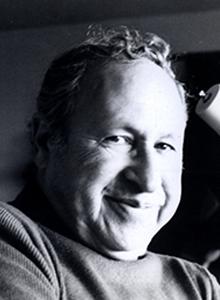
Carl Burgos
1916–1984
Carl Burgos joined the Harry Chesler shop in 1938. He spent most of 1938 and 1939 writing and drawing features like “Iron Skull” and “Stoney Dawson” for the Centaur group. Burgos moved to Lloyd Jacquet’s Funnies, Inc. studio, and together with Bill Everett began working at Timely’s Marvel Comics. While Everett created the Sub-Mariner strip, Burgos created the flaming android known as the Human Torch. The fiery character caught on and was appearing in his own book by autumn 1940. Burgos left the strip and comics in 1942 and, besides an occasional reappearance in color comics, spent most of the next 25 years in advertising art.
Inducted 2016

John Buscema
1927–2002
Fan favorite artist John Buscema is probably best known for his work at Marvel, drawing The Silver Surfer and Conan the Barbarian, plus pretty much every other character the company produced from the 1960s through the 1990s. He influenced many an aspiring penciller with his art in Stan Lee’s How to Draw Comics the Marvel Way.
Inducted 2002

Wilhelm Busch
1832–1908
The German 19th-century artist is regarded as one of the founders of modern-day comics. He pioneered several elements that have become staples of the medium, such as onomatopoeia and expressive movement lines. His iconic series Max und Moritz (1865), about two naughty young boys, was the first children’s comic in history. Its success proved that young readers were an important market for comics.
Inducted 2025
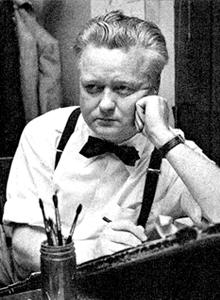
Ernie Bushmiller
1905–1982
Ernie Bushmiller got his start as a cartoonist when he took over the Fritzi Ritz comic strip in 1925. In 1933, he added Fritzi’s niece Nancy to the strip. The character became so popular that Ernie changed the name of the strip to Nancy in 1938. Ernie continued to do the newspaper strip (with the help of various assistants) until his death at the age of 77.
Inducted 2011

John Byrne
1950–
Writer/artist John Byrne is best known for his long run on Uncanny
X-Men (beginning with writer Chris Claremont in 1977), including the classic “Days of Future Past” and “Dark Phoenix” story arcs. During that time he created Alpha Flight, Proteus, and Kitty Pryde. This work was followed by a five-year run (1981–1986) on Fantastic Four along with the Alpha Flight series. In 1986 he revamped Superman for DC and worked on various Superman titles for two years, after which he returned to Marvel to write and draw such titles as The Sensational She-Hulk, Namor the Sub-Mariner, and West Coast Avengers. In the 1990s he produced the creator-owned series Next Men for Dark Horse. He continues to produce work for IDW and other publishers.
Inducted 2015
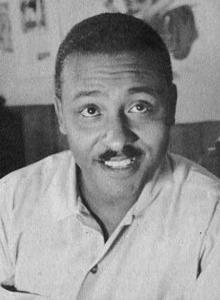
E. Simms Campbell
1906–1971
E. Simms Campbell was an indispensable part of Esquire magazine’s birth in the early 1930s. He established its visual style and invented the original “Esky” mascot character. And, in the words of its founding editor Arnold Gingrich, his full-page color cartoons “catapulted the magazine’s circulation from the start.” Campbell may also be the first African American illustrator not only to break the color line in mass-market publications but to earn widespread public acclaim as well. During his art career, Campbell produced cartoons for a variety of magazines such as Life, Cosmopolitan, and nearly every issue of Esquire until his early-1960s hop over to Playboy. He did covers for Judge and The New Yorker and created woodcut-style illustrations for a Langston Hughes young adult novel.
Inducted 2020

Eddie Campbell
1955–
Eddie Campbell is best known for his award-winning graphic novel with Alan Moore From Hell, which was made into a movie in 2001. Campbell is also the creator of the semi-autobiographical Alec stories collected in Alec: The Years Have Pants, and Bacchus, a wry adventure series about some of the Greek gods surviving to the present day. The Fate of the Artist, in which the author investigates his own murder, and The Lovely Horrible Stuff, an investigation of our relationship with money, are also among his graphic novels. His most recent works include The Goat Getters and The Second Fake Death of Eddie Campbell.
Inducted 2025
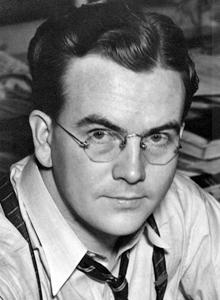
Milton Caniff
1907–1988
A pioneer in the action/adventure comic strip, Milton Caniff influence generations of artists with his storytelling and chiaroscuro art on Terry and the Pirates. He also set precedent by leaving Terry to create a strip that he could own himself: Steve Canyon.
Inducted 1988

Al Capp
1909–1979
Cartoonist Al Capp added to American pop culture and our language through his clever and popular newspaper strip Li’l Abner, which ran for 43 years. Capp delighted funnypapers fans with his creations: the Yokum family of Dogpatch, U.S.A., the Schmoo, Sadie Hawkins Day, Kickapoo Joy Juice, Joe Bfstplk, Fearless Fosdick, Lower Slobbovia, and much, much more.
Inducted 2004
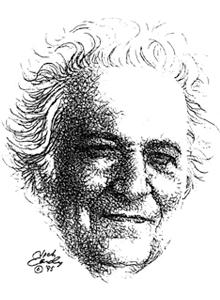
Nick Cardy
1920–2013
Nick Cardy began in comics in 1939 at the Eisner/Iger Studio. He then joined Will Eisner at his Tudor City Studio to draw “Lady Luck,” among other assignments. In the 1960s Nick he had long and influential runs on Aquaman and then Teen Titans. In 1969 he drew the short-lived but highly regarded Bat Lash series. In the early 1970s he drew a number of popular stories for Brave & the Bold and was the chief cover artist for DC, drawing numerous covers for Superman, Action Comics, Flash, Secret Origins, The Witching Hour, and many more titles.
Inducted 2005

Lucy Shelton Caswell
1944–
Lucy Shelton Caswell is the founder (in 1977) and former curator of the Billy Ireland Cartoon Library & Museum at The Ohio State University. She is also founding editor emerita of INKS: The Journal of the Comics Study Society. She has curated more than 75 cartoon-related exhibits and is the author of several articles and books on the history of newspaper comic strips and the history of American editorial cartoons. She is a co-founder (in 2014) of Cartoon Crossroads Columbus.
Inducted 2025

Roz Chast
1954–
Roz Chast has been a cartoonist for The New Yorker since 1978, and she has also worked for Scientific American, The Harvard Business Review, Redbook, and Mother Jones. Her Eisner-nominated 2014 book Can’t We Talk About Something More Pleasant? is a graphic memoir, combining cartoons, text, and photographs to tell the story of an only child helping her elderly parents in the final stages of their lives. She has also illustrated many books, including the children’s book The Alphabet from A to Y, with Bonus Letter, Z by comedian Steve Martin.
Inducted 2025

Howard Chaykin
1950–
After working as an assistant for the likes of Gil Kane, Wally Wood, Neal Adams, and Gray Morrow, in the early 1970s Howard Chaykin became a freelancer for such publishers as Marvel, DC, Warren, and Heavy Metal. In 1974, he created “Cody Starbuck” for Star*Reach. Chaykin pioneered the graphic novel with Alfred Bester’s The Stars My Destination and Samuel R. Delaney’s Empire, among others. In 1977, prior to the movies, he drew the first Star Wars comics with scripts by Roy Thomas. In 1983, he created the hit series American Flagg! at First Comics. His 1980s output included Black Kiss (Vortex), The Shadow and Blackhawk (DC) and his postmodern graphic novel Time2 at First. Subsequent projects have included Twilight, Power and Glory, American Century, Mighty Love, The Divided States of Hysteria, and Hey, Kids! Comics!
Inducted 2022
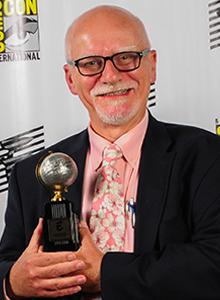
Chris Claremont
1950–
Writer Chris Claremont is well known for his 17-year run on Uncanny X-Men, for which he created or co-created such characters as Rogue, Phoenix, Mystique, Sabretooth, and Gambit. His story arcs in collaboration with John Byrne included such classics as “Dark Phoenix” and “Days of Future Past.” His Wolverine minseries with artist Frank Miller inspired the storyline for the 2013 film The Wolverine. The 1991 X-Men #1 spinoff issue, which Claremont co-wrote with Jim Lee, remains the bestselling comic book of all time. In the 1990s Claremont wrote a variety of titles for several publishers, including his own Sovereign Seven for DC, as well as some prose novels. He returned to Marvel in 1998 as editorial director and the regular writer of Fantastic Four. Today he continues to write novels and to work for Marvel, writing such titles as X-Women and Nightcrawler.
Inducted 2015

Dan Clowes
1961–
Daniel Clowes gained fame with his comic book series Eightball, which was notable for its dark humor and commentary on modern culture. His graphic novel Ghost World received particular acclaim, becoming a cult classic and later adaptation into a feature film. More recently, his books Patience and Monica have been critically acclaimed, showcasing his continued innovation and depth in graphic storytelling.
Inducted 2025
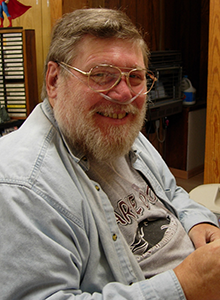
Dave Cockrum
1943–2006
Comics artist Dave Cockrum was known for his inventive costume designs. A prolific fanzine artist, he began his professional career in 1971 doing work for Warren Publishing, followed in 1972 by the Western strip “Shattuck” for Wally Wood. He soon found inking work as Murphy Anderson’s assistant on DC’s Superman and Superboy titles and then became the artist on the “Legion of Super-Heroes” feature. After he left DC for Marvel, he and Len Wein co-created the new X-Men, including such characters as Storm, Nightcrawler, and Colossus. He also co-created the Spider-Man character Black Cat with Marv Wolfman. Cockrum left a staff position at Marvel in 1979 but continued to freelance for Marvel, DC, and other companies, which included a return to the X-Men in 1981. He produced his own title, The Futurians, in 1983, first for Marvel, then published by Lodestone/Deluxe, where he also worked on the mid-80s revival of T.H.U.N.D.E.R. Agents. From 1995 to 2000, he was the regular artist on Soulsearchers and Company for Claypool Comics.
Inducted 2021
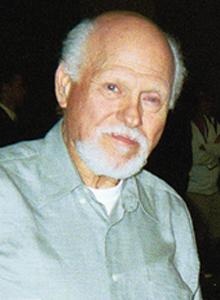
Gene Colan
1926–2011
Gene Colan began working in comics in 1944. He came into prominence in the 1960s as part of the Marvel Silver Age crew, drawing Daredevil, Dr. Strange, Sub-Mariner, Captain America, and other titles before going on to famed runs on Tomb of Dracula and Howard the Duck. In the 1980s, Gene worked on a number of titles at DC, including Night Force and Nathaniel Dusk.
Inducted 2005

L.B. Cole
1926–2011
One of the most versatile cover artists in the history of comics, Leonard Brandt Cole worked in a wide range of styles and in just about every genre, from funny animals to romance to war as well as science fiction and horror. His striking colors and appealing (if sometimes bizarre) designs have made Golden Age comics with his covers highly collectible.
Inducted 1999
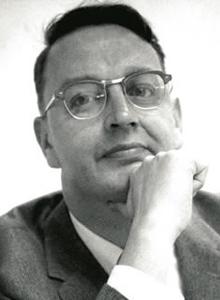
Jack Cole
1918–1958
Jack Cole was one of the most innovative cartoonists in the history of comics. In addition to creating Plastic Man, he gave a distinctive look to superhero, crime, and horror series for Harry A. Chesler, Busy Arnold, MLJ, and other Golden Age publishers. He eventually left comics in the early 1950s to draw “Females by Cole” for Playboy, and a syndicated comic strip, Betsy and Me.
Inducted 1999

Richard Corben
1940–2020
In the late 1960s Richard Corben published his own underground comic book, Fantagor, and contributed to the underground magazines Slow Death and Skull. In the 1970s he drew regularly for Eerie, Creepy, and Vampirella. But it was his color stories in Heavy Metal that brought him a huge fan following, with such series as “Bloodstar,” “Mutantworld,” and “Den.” Since then he had done work for Marvel, DC, IDW, and most notably Dark Horse, drawing the Eisner Award–winning Hellboy.
Inducted 2012

Johnny Craig
1926–2001
Johnny Craig is best known for his work on the horror and crime titles at EC Comics in the late 1940s and early 1950s. Although he created some of the most notorious and gory covers for such titles as Vault of Horror and Crime Suspenstories, aficionados laud him for this well-crafted crime stories, which he both wrote and drew, in Shock Suspenstories, Crime Suspenstories, and Extra.
Inducted 2005
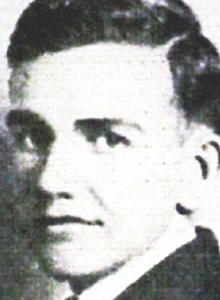
Reed Crandall
1917–1982
Reed Crandall started with the Eisner/Iger Studio, where he worked primarily on titles for Quality Comics, including Hit, Crack, Smash, and Uncle Sam (which became Blackhawk), where he drew such features as “The Ray,” “Dollman,” and “Firebrand.” In the late 1940s Crandall began working at EC, drawing everything from horror and suspense to science fiction. In the 1960s he produced a series of highly acclaimed stories for Warren’s Creepy and Eerie.
Inducted 2009

Roy Crane
1901–1977
Roy Crane was a major innovator of the adventure strip with his creations Wash Tubbs, Captain Easy, and Buz Sawyer. His use of chiaroscuro and his storytelling techniques have influenced countless artists in both comics strips and comic books. Eerie.
Inducted 2001
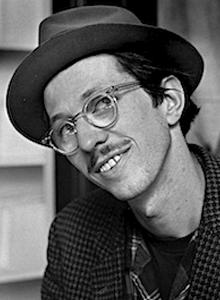
R. Crumb
1943–
Immortalized in the film Crumb, the legendary underground cartoonist Robert Crumb created lasting cultural icons in the form of Mr. Natural, Fritz the Cat, and “Keep on Truckin’.” Today he continues to turn out his idiosyncratic and beautifully drawn work from his home in France, which he shares with wife, cartoonist Aline Kominsky.
Inducted 1991

Howard Cruse
1944–2019
Howard Cruse first appeared on the national comics scene with his underground strip Barefootz in 1972. In 1979 he began editing Gay Comix, an anthology featuring comix by openly gay and lesbian cartoonists. In 1983 Cruse introduced his comic strip Wendel to the pages of The Advocate, the national gay newsmagazine, where it appeared regularly until 1989. His 1995 graphic novel Stuck Rubber Baby (published by Paradox Press) won Eisner and Harvey Awards and went on to be translated into numerous languages around the world; it was republished by Vertigo in 2010, and a 25th anniversary edition was published in 2020 by FirstSecond. Howard passed away in November 2019.
Inducted 2020

Jack Davis
1924–2016
Perhaps best known for his wild and vivid art for the early MAD, Jack Davis was also a staple of EC’s horror and war titles, from Vault of Horror and Tales from the Crypt to Two-Fisted Tales. He went on to a career as a commercial illustrator, creating movie posters as well as covers for record albums and for such magazines as Time and TV Guide.
Inducted 2003
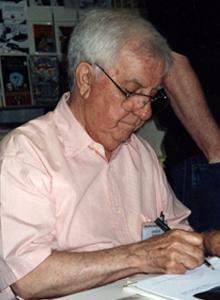
Dan DeCarlo
1919–2001
Dan DeCarlo defined the “house style” at Archie Comics with his rendition of the teen characters, especially the “gals.” In his 40+ years as an Archie freelancer, Dan also created Josie (of Josie and the Pussycats fame) and co-created Sabrina the Teenage Witch.
Inducted 2002

Kim Deitch
1944–
Pioneer underground cartoonist Kim Deitch’s best-known character is Waldo the Cat, a fictional 1930s-era animated cat who stars in the seminal Boulevard of Broken Dreams, Shroud of Waldo, Alias the Cat, and various other strips and books. Kim’s other works include Shadowlands, Reincarnation Stories, Beyond the Pale, and Deitch’s Pictorama, a collaboration with brothers Simon and Seth. Art Spiegelman has called Deitch “the best kept secret in American comics.” Deitch was co-founder of the Cartoonists Co-op Press (1973–1974) and has taught at the School for Visual Arts in New York. He received Comic-Con’s Inkpot Award in 2008.
Inducted 2024
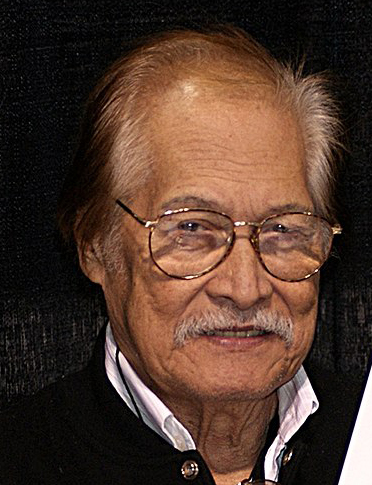
Tony DeZuniga
1932–2012
Tony DeZuniga was the first Filipino comic book artist whose work was accepted by American publishers and was instrumental in recruiting many other Filipino artists to enter the U.S. comics industry in the early 1970s. He is best known for co-creating Jonah Hex and Black Orchid. DeZuniga divided his time between DC and Marvel, drawing not only Jonah Hex and Conan but also many other well-known characters, including Doc Savage, Thor, The X-Men, Swamp Thing, Batman, Dracula, Iron Man, Doctor Strange, Red Sonja, The Punisher, and Spider-Man.
Inducted 2023

Rudolph Dirks
1877–1968
In 1897 Rudolph Dirks‘ editor at the New York Journal asked him to create a strip that could compete with the popularity of The Yellow Kid by Outcault, which was published in a rival newspaper, The New York World. Dirks came up with The Katzenjammer Kids, which was one of the first strips to use a permanent cast, a frame sequence, and speech balloons. Dirks took the strip to the New York World under the title Hans und Fritz, later renamed The Captain and the Kids.
Inducted 2012
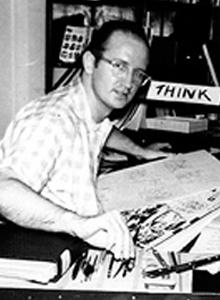
Steve Ditko
1927–2018
The reclusive and enigmatic Steve Ditko co-created Spider-Man with Stan Lee and was an integral part of Marvel’s Silver Age in the 1960s, where he also co-created the psychedelic Dr. Strange. At DC, he created The Creeper, Hawk and Dove, The Question, and other titles. His distinctive style on Dr. Strange and numerous horror and SF books for other companies (especially Charlton) influenced hundreds of artists.
Inducted 1994

Arnold Drake
1924–2007
Arnold Drake was a writer best known for creating Deadman and Doom Patrol for DC Comics. He also wrote issues of Marvel Comics’ X-Men in the 1960s and created The Guardians of the Galaxy with artist Gene Colan. Drake is also notable for co-creating It Rhymes with Lust (with Matt Baker), perhaps the first American graphic novel ever published, in 1953.
Inducted 2008

Mort Drucker
1929–2020
After freelancing on mystery, war, and space titles for DC and Atlas during the 1950s, Mort Drucker found his way to MAD magazine, where he has specialized in movie and television satires and parodies for over 50 years. Drucker has also done work in commercial art, doing animation for television, movie posters, and covers and illustrations for magazines.
Inducted 2011

Philippe Druillet
1944–
Philippe Druillet is one of the most influential French comics creators and is known for his baroque drawings and bizarre science fiction stories. He made his debut in comics with Lone Sloane, le Mystère des Abîmes in 1966. He became a regular contributor to the Franco-Belgian comics magazine Pilote, then in 1975 co-founded the publishing house Humanoïdes Associés and the Métal Hurlant periodical. Many of his stories from that magazine were published in the U.S. in Heavy Metal magazine.
Inducted 2025

Marie Duval
1847–1890
“Marie Duval” was born Isabelle Emilie Louisa Tessier in Marleybone, London in 1847. Tessier was one of the first female cartoonists in Europe. Her fame rests on her contributions to the Ally Sloper comic pages created with her husband Charles Henry Ross in the comic periodical Fun, and reprinted in a shilling book, Ally Sloper: A Moral Lesson in November 1873. This work is often called “the first British comic book.” The idea of a recurring, familiar cartoon character appears to have begun with Ally Sloper. The wildly popular character (a hard-drinking working class shirker) is thought to have inspired both Charlie Chaplin’s Tramp persona and W. C. Fields. Besides Ally Sloper, Marie Duval drew a range of comic fantasies (“caricatures”) for the magazine Judy, a Victorian rival to Punch.
Inducted 2022
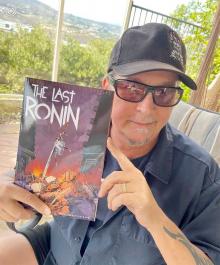
Kevin Eastman
1962–
Writer/artist/publisher Kevin Eastman co-created Teenage Mutant Ninja Turtles with Peter Laird. The duo published the comic themselves starting in 1984, under the imprint Mirage Studios. The Turtles quickly made the leap to other media and went on to star in multiple movies, animated TV series, and toy lines over the years. In 1990 Eastman founded Tundra Publishing, which funded and published creator-owned comics by talent such as Alan Moore, Melinda Gebbie, Eddie Campbell, and Mike Allred, until 1993. Eastman also owned Heavy Metal magazine for more than 20 years, until 2014, and he continued to serve as its publisher until 2020.
Inducted 2022
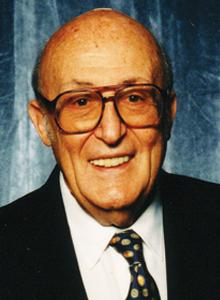
Will Eisner
1917–2005
In his more than 50 years in the comics industry, Will Eisner did it all. He was a pioneer in the Golden Age, involved in the creation of characters such as Sheena, Blackhawk, and Uncle Sam. His weekly newspaper insert, The Spirit, was unique not only for its format and great art/storytelling but also for the fact that Eisner owned it himself. Later in his career, Eisner created award-winning graphic novels and wrote and illustrated books about graphic storytelling.
Inducted 1987
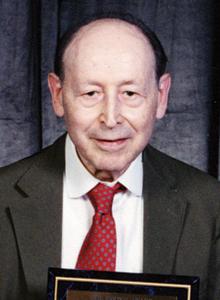
Will Elder
1921–2008
Will Elder began his comics career in 1946, sharing a studio with Harvey Kurtzman. He was one of the original artists of Kurtzman’s MAD from its first issue in October/November 1952. At MAD he was noted for his zany humor and the extra jokes he would work into story backgrounds. He also worked with Kurtzman on Trump, Humbug, and Help! magazines before embarking on their longtime collaboration, “Little Annie Fanny,” for Playboy, which lasted from 1962 to 1988.
Inducted 2003
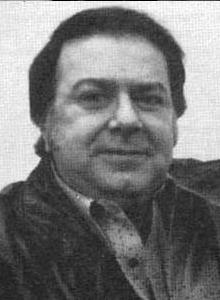
Mike Esposito
1927–2010
Inker Mike Esposito is known for his longtime collaboration with penciler Ross Andru., In the early 1950s the young men started their own studio to work primarily on such DC war titles as Our Army at War, Fighting Forces, and Star Spangled War Stories. They went on to have successful runs on DC’s Metal Men and Wonder Woman. In the mid-1960s Esposito began inking for Marvel, then went on to become an inker and then editor at Archie Comics.
Inducted 2007

Orrin C. Evans
1902–1971
Orrin C. Evans was a Philadelphia newspaper reporter who, with two partners, published the first all-black comic book in 1947. All-Negro Comics was a 48-page newsstand comic consisting of a variety of strips (from hard-boiled crime to fantasy to humor) that featured black characters created by black writers and artists. Although only one issue was published, its existence was a historic achievement. Evans returned to newspapers shortly after the end of All-Negro Comics, serving as editor of the Chester Times and the Philadelphia Bulletin, director of the Philadelphia Press Association, and an officer of the Newspaper Guild of Greater Philadelphia.
Inducted 2014

Bill Everett
1917–1973
Starting with the first issue of Marvel Mystery Comics in 1939, Bill Everett created the Sub-Mariner and drew the character’s most memorable stories for Timely (which later became Marvel). A fan favorite artist of the Golden Age, Everett returned to Marvel briefly in the 1960s, where he drew the first issue of Daredevil and worked on his signature creation, Sub-Mariner, once again.
Inducted 2000

Lee Falk
1911–1999
Lee Falk created Mandrake the Magician as a newspaper strip in 1934 (with art by Phil Davis) and The Phantom in 1936 (with art by Ray Moore). He continued to write both series until his death in 1999. The characters have been featured in serials, films, and comic books, and the strips continue today.
Inducted 2013
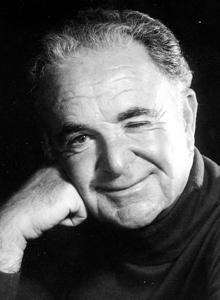
Al Feldstein
1925–2014
Al Feldstein served as editor, writer, and artist for EC Comics beginning in 1947. He wrote most of what are considered the “classic” EC stories for the horror and science fiction titles, along with producing covers and interior art. He took over as editor of MAD magazine in 1956, which he shepherded until his retirement in 1984. Still active as an artist, Feldstein is now a well-known painter.
Inducted 2003
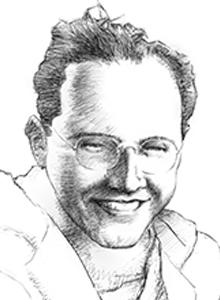
Lou Fine
1915–1971
Lou Fine is known as one of the best artists to work in the Golden Age of comics. His career began at the Eisner/Iger Studio, where he specialized in covers for Fox Features titles. For Quality, he drew such features as “The Black Condor” and “Uncle Sam,” and he drew The Spirit for Will Eisner during Eisner’s stint in the service. His most highly regarded efforts were his art on “The Ray” in Smash Comics and his covers for Hit Comics.
Inducted 2005
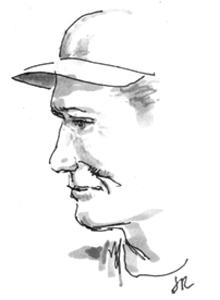
Bill Finger
1914–1974
One of the unsung heroes of the Golden Age, Bill Finger, along with Bob Kane, co-created Batman. Besides writing the first Batman stories and the first Robin story, he is credited with dreaming up such villains as the Penguin and Catwoman. He also wrote the first Green Lantern story and is the namesake of Comic-Con International’s Bill Finger Award for Excellence in Comic Book Writing.
Inducted 1999
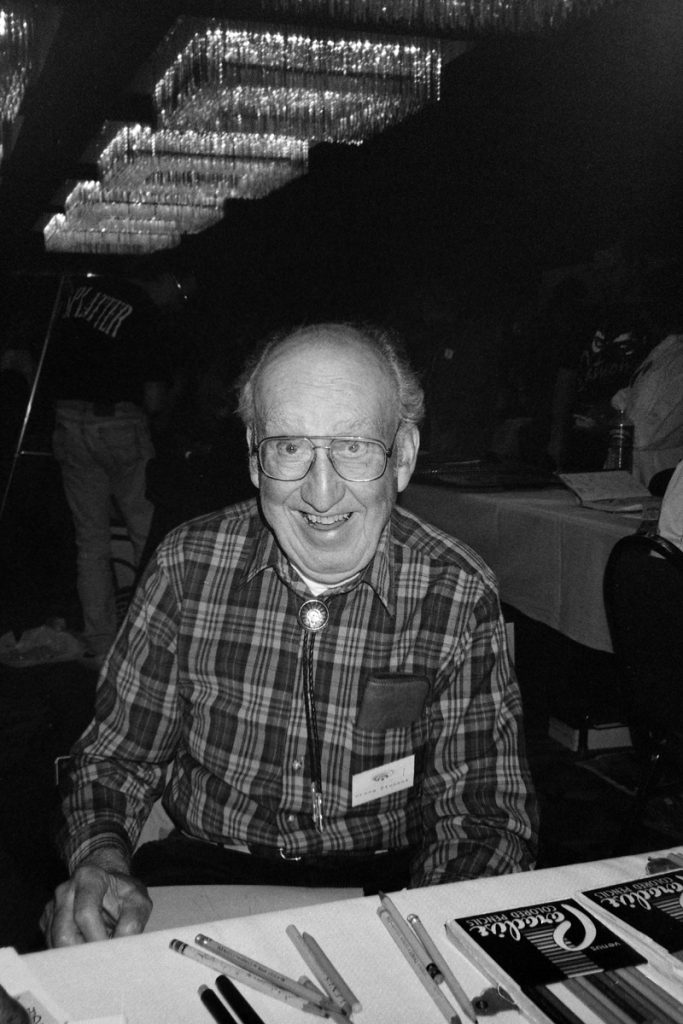
Creig Flessel
1912–2008
Creig Flessel drew the covers of many of the first American comic books, including the pre-Batman Detective Comics #2–#17 (1937–1938). As a writer/artist, Flessel created the DC character the Shining Knight, in Adventure Comics #66 (Sept. 1941). He drew many early adventures of the Golden Age Sandman and has sometimes been credited as the character’s co-creator. When editor Vin Sullivan left DC Comics and formed his own comic book publishing company, Magazine Enterprises, Flessel signed on as associate editor. He continued to draw comics, often uncredited, through the 1950s, including Superboy stories in both that character’s namesake title and in Adventure Comics, and anthological mystery and suspense tales in American Comics Group (AGC’s) Adventures into the Unknown.
Inducted 2024
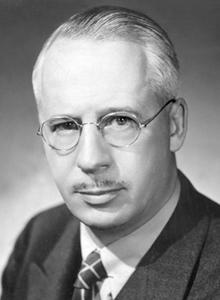
Harold R. Foster
1892–1992
For decades Harold R. Foster produced gorgeous Sunday comic strips of Tarzan and his own creation, Prince Valiant, which he wrote and illustrated for almost 40 years. He is lauded by all as one of the great artists of the comic strip field.
Inducted 1998

Gardner Fox
1911–1986
Gardner Fox was the first “full-time professional” comic book writer, with a career that spanned 34 years, from 1938 to 1972. In all, he churned out more than 4,000 scripts for DC, where he created the Flash, Sandman, Dr. Fate, Hawkman, Adam Strange, the Justice Society, and the Justice League, and he wrote for numerous other titles, from Batman to the Atom.
Inducted 1999

Ramona Fradon
1927–2024
Working in what was primarily a men’s industry, Ramona Fradon drew comics for DC in the 1950s and 1960s, with a memorable run on Aquaman. She also co-created Metamorpho. After a hiatus in the late 1960s, she returned to DC to draw such titles as Plastic Man. She left DC in 1980 to bring her distinctive style the Brenda Starr newspaper strip, which she continued to draw until her retirement in 1995.
Inducted 2006

Frank Frazetta
1928–2010
Although he worked on both comic books (EC Comics stories and covers) and comic strips (Li’l Abner, Johnny Comet), Frank Frazetta is best known for his book and magazine covers (Tarzan, Creepy, Eerie, and especially Conan) and movie posters. His style has influenced untold numbers of fantasy painters and illustrators.
Inducted 1995

A. B. Frost
1851–1928
The work of illustrator/cartoonist Arthur Frost was published in three albums: Stuff and Nonsense (1884), The Bull Calf and Other Tales (1892), and Carlo (1913). Because of his skills in depicting motion and sequence, Frost was a great influence on such early American newspaper comics artists as Richard Outcault, Rudolph Dirks, Jimmy Swinnerton, and Fred Opper. His work appeared in magazines such as Harper’s Weekly and Punch.
Inducted 2024